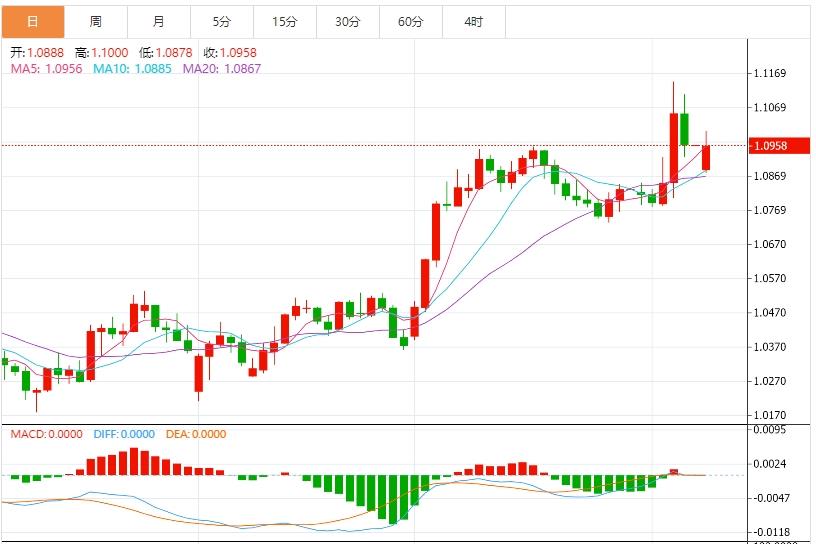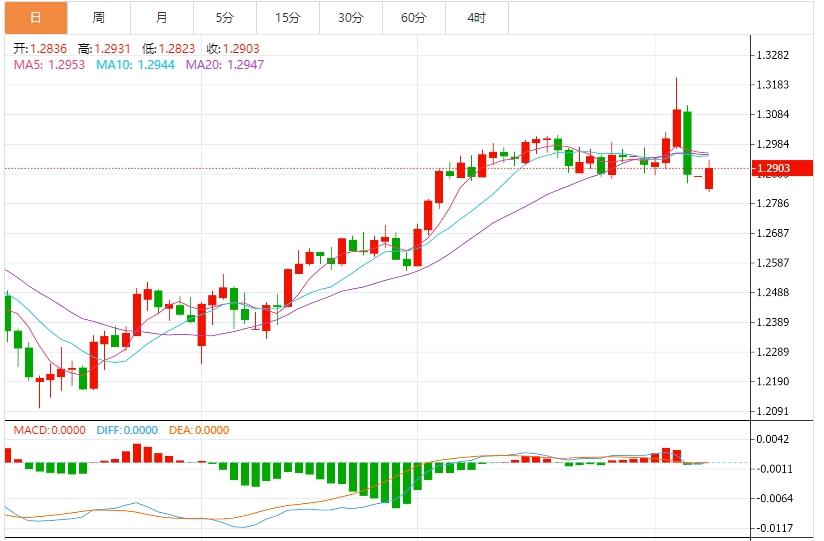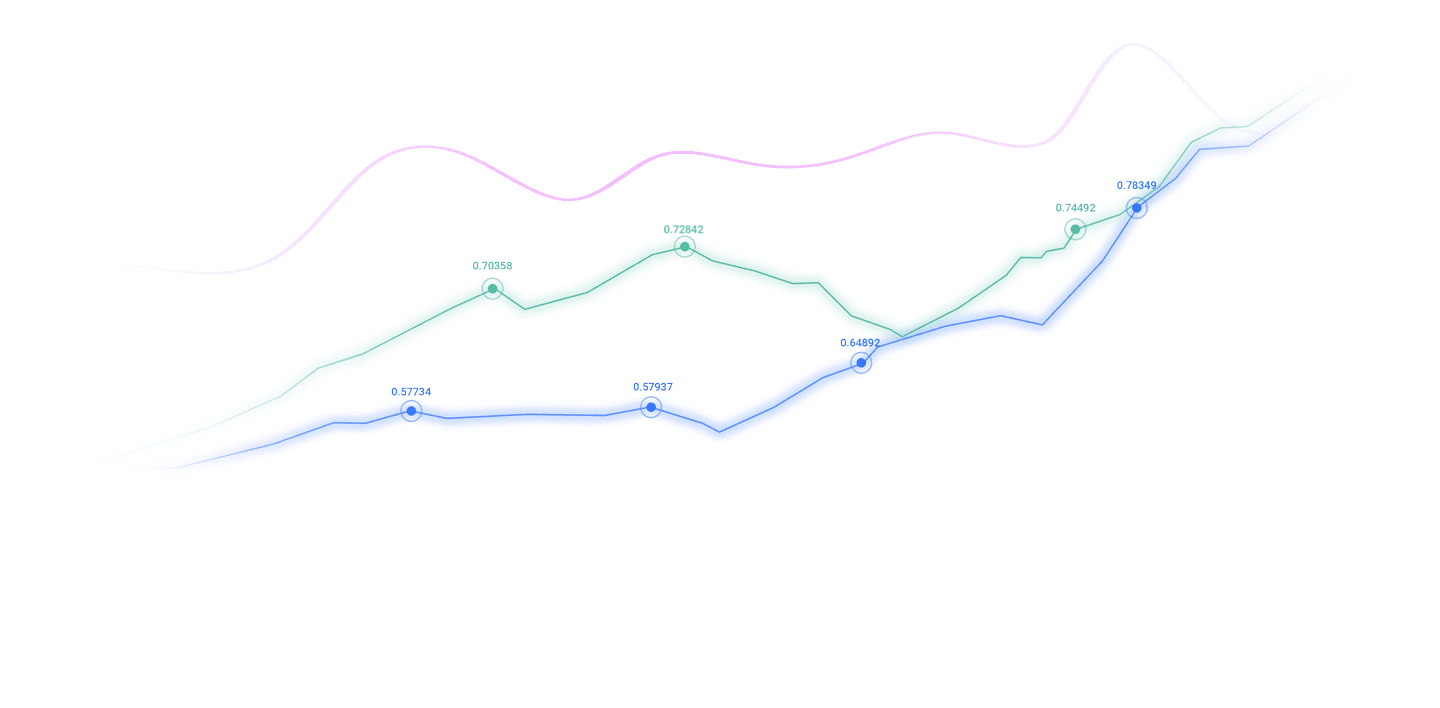Trusted by over 15 Million Traders
The Most Awarded Broker
for a Reason
CATEGORIES
News
- 【XM Market Analysis】--Weekly Forex Forecast – GBP/USD, EUR/USD, USD/JPY, AUD/USD
- 【XM Market Review】--Nasdaq Forex Signal: Plunges After Better Jobs Figures
- 【XM Market Analysis】--Gold Analysis: Surges Beyond $2,700 on Rate Cut Bets
- 【XM Decision Analysis】--AUD/USD Forex Signal: Recovery Intact, But Faces Strong
- 【XM Group】--Natural Gas Forecast: Can Natural Gas Continue This Rally?
market news
The US dollar index fluctuates downward, paying attention to US CPI and international trade this week
Wonderful introduction:
Life needs a smile. When you meet friends and relatives, you can give them a smile, which can inspire people's hearts and enhance friendships. When you receive help from strangers, you will feel xmaccount.comfortable with both parties; if you give yourself a smile, life will be better!
Hello everyone, today XM Foreign Exchange will bring you "[XM Official Website]: The US dollar index fluctuates downward, pay attention to US CPI and international trade this week." Hope it will be helpful to you! The original content is as follows:
On the Asian session on Monday, the US dollar index fluctuated and fell, and the market remained cautious. The market will release a number of important economic data in the next week: on Monday, the United Kingdom's industrial output, the United Kingdom's March Halifax House Price Index and the euro zone's April Sentix Index; on Tuesday, Japan's current account balance and Australia's March NAB business confidence indicators were released; on Wednesday, the focus was on the speech of the President of the Bank of Japan (BoJ) and the Federal Reserve's release of the minutes of the March meeting; on Thursday, the United Kingdom's April Rightmove House Price Index, Japan's March corporate xmaccount.commodity price index, Sweden's February GDP growth rate, Norway's March CPI data, and the Czech March final value CPI. The most eye-catching are the United States' March CPI data, the number of people who requested unemployment benefits per week, and Canada's February construction permit data; on Friday, the United Kingdom's February GDP and manufacturing output, Sweden's March CPI, the United States' March PPI and the University of Michigan's April consumer confidence initial value.
Analysis of major currencies
United States dollar: As of press time, the US dollar index hovered around 102.79, down 0.10% during the day. The dollar index (DXY) rose last Friday, trading near the 103 region, after the previous release of NonfarmPayrolls was stronger than expected. The momentum of the dollar is also affected by the remarks of Federal Reserve Chairman Jerome Powell, who pointed out that the inflation risks brought by tariffs are higher than expected, while emphasizing the Fed's wait-and-see attitude. Technically, despite the rebound, DXY is still in a bearish structure. Technically, the US dollar index (DXY) rose slightly in trading last Friday, but the bearish tone remainsIt exists, hovering in the 103 range. Moving average convergence/divergence (MACD) continues to send a sell signal, reflecting fragile bullish momentum despite a reading of 35.58 in the neutral range. The 20-day, 100-day and 200-day simple moving averages (SMA), as well as the 10-day exponential moving averages (EMA), both point to bearish trends. Finally the oscillator and stochastic %K were also neutral, confirming the hesitation. On the upside, the resistance levels are 103.50, 103.73 and 103.81. Meanwhile, the support is at 102.61, which may be further under pressure if this level falls.



1. March CPI data will dominate the market
The focus of this week is on the March CPI data released on Thursday, which will be the next major test facing the US dollar. If data show that inflationary pressure in the U.S. economy continues, it may support the dollar, as it will enhance the Fed's doubts about further rate cuts. Therefore, the market is particularly concerned about the minutes of the Federal Reserve's March meeting to be released on Wednesday, with traders and analysts going to carefully study the document for more clues about the Fed's intentions.
It is worth noting that since Trump announced tariffs, market expectations for the Fed's interest rate cut have been strengthened, with federal funds futures suggesting that the Fed will cut interest rates four times by the end of the year. However, on the other hand, if the inflationary effect caused by Trump's tariffs appears, it may change these market expectations. From a fundamental perspective, Trump's new tariffs have xmaccount.come into effect and are more intense than market initially expected. The announcement has exacerbated market concerns about the outlook for the U.S. economy and put considerable pressure on the dollar. It should be noted that the Atlanta Fed's forecast for the first quarter of 2025 GDP is still at a significantly negative value, further suggesting a bleak US economic outlook. Analysts believe that further escalation of trade frictions may have a bearish impact on the dollar.
2. British Pound: February growth data became the focus
At the macroeconomic level, analysts noticed the slowdown in UK housing prices last month and the expansion of economic activity in the UK's service industry was lower than the initial estimate, and focused on February GDP data and other UK economic growth data during the same period. If the data shows that the UK economy continues to shrink, it may put pressure on the pound. In terms of monetary policy, as Greene, the Bank of England policymaker, seems to be concerned about the continued pressure on inflation in the UK. But the U.S. imposes tariffs may change the central bank's position. The market currently expects the Bank of England to cut interest rates by 25 basis points in its May meeting, and the August meeting cuts interest rates again and slightly included in another interest rate cut in December meeting. Therefore, if Bank of England policymakers who plan to speak next week express further doubts about rate cuts, the pound may gain some support. Fundamentally, the US imposes only a 10% general tariff on UK products (the minimum level imposed) as a positive factor. However, as the British Prime Minister pointed out, U.S. tariffs will obviously have an impact on the British economy.
3. Japanese Yen: Bank of Japan intends to become the focus
The economic data recently released by Japan tends to be mixed. In terms of demand, the slowdown in retail sales growth rate in February exceeded expectations was a negative factor. In terms of production, industrial output accelerated in February, while the short-term index in the first quarter sent a mixed signal - service industryPositive and manufacturing are negative, the latter may have a greater impact. Next week, the market will focus on the March corporate xmaccount.commodity price index to understand inflation outlook, and the March current account balance may also attract some attention. In terms of monetary policy, the market expects the Bank of Japan to raise interest rates in July or September. However, Bank of Japan Governor Ueda warned that U.S. tariffs could have an impact on global trade. Nevertheless, analysts tend to think that the Bank of Japan will maintain its hawkish intentions, focusing specifically on President Ueda's speech next Wednesday, looking for further clues about the central bank's intentions. Any hawkish remarks may support the yen. In fundamental terms, the United States imposes relatively high tariffs on Japanese products, which may put pressure on the yen if taken into account from a xmaccount.comprehensive perspective and are associated with other economies such as the EU. During these turbulent times, the safe-haven nature of the yen should not be underestimated in fundamentals.
4. Euro: The EU is deeply trapped in strategic myths
Euro traders tend to focus on the fundamentals of xmaccount.common currencies. The need for internal political stability in the EU, the U.S. "betrayal" in the Russian-Ukrainian conflict, the need to increase fiscal spending on defense and infrastructure, and the search for the EU's role on the global stage all highlight the uncertainty surrounding a single currency. On the one hand, Germany's determination to go deep into the fiscal pocket tends to support the euro, while on the other hand, the recent tariffs imposed on European products by the United States tend to exacerbate pressure on the EU's economic outlook. Any further signs of increased fiscal spending at the EU level may support the xmaccount.common currency. In terms of monetary policy, analysts noticed the warnings from ECB President Lagarde about the possible adverse effects of U.S. tariffs. German Federal Bank President Nager said that the situation will need to be reassessed, which is very telling. The release of minutes of the ECB monetary policy meeting tends to verify that, given the uncertainty of the international economy, the central bank will be more cautious in setting interest rates and xmaccount.communicating. Currently, after the announcement of U.S. tariffs, the market appears to expect the ECB to cut interest rates twice, possibly three times by the end of the year, so the dovish orientation seems to dominate the market's expectations of the ECB action. If central bank officials express more hawkish intentions, they may see some support from the euro. As for financial data, analysts noticed that the euro zone's inflation pressure was further easing, but next week, the calendar of euro traders is quite light, so analysts believe that fundamentals will lead the euro's direction.
5. Canadian dollar: Intensified trade frictions will suppress the Canadian dollar
At the macro level, analysts noticed that the intensified contraction of Canadian manufacturing economic activity and the February trade surplus are negative signals of Canada's economic outlook. Next week, apart from Canada’s February construction permit growth rate released on Thursday, there appears to be a lack of high-impact financial data releases on Canadian dollar traders, so fundamentals may be the main determinant of the Canadian dollar direction. Although Canada has been exempted from Trump's 10% general tariffs, tensions are another negative signal to the Canadian economic outlook, and the existing US-Canada trade frictions may escalate.It will put pressure on the Canadian dollar. On the other hand, analysts also noticed a sharp drop in oil prices this Thursday as oil demand is expected to decline due to Trump tariffs. If the bearish direction is maintained next week, the Canadian dollar may pull back given Canada's position as a major oil-producing economy. In terms of monetary policy, the market's dovish expectations of the Bank of Canada still exist, and the market expects the Bank of Canada to cut interest rates at its next meeting. The market also expects the central bank to cut interest rates four more times within a year. Any signs of a Bank of Canada pointing to a monetary policy that may be tighter than expected may be supportive of the Canadian dollar and vice versa.
Institutional View
1.Institution: The RBA has sufficient room for interest rate cuts, but it still needs to be cautious.
JudoBank chief economic adviser Warren Hogan said that if the RBA has 50 to 75 basis points of interest rate cuts to cope with market turmoil, this will bring the policy back to a neutral level. However, as Australia overall benefits from tariffs (its benchmark tariff rate is 10%, below the average tariff level in other countries) and its impact on its export market is not yet fully clear, the RBA needs to be cautious.
2. German Bellemberg Bank: The euro zone and the UK economic growth expectations remain due to uncertainty
German Bellemberg Bank said that due to the strong reaction of some US trading partners to the new tariffs and the widespread uncertainty, European economic sentiment in the second quarter may be worse than we had expected. We lowered our expectations for real GDP growth in the euro zone and the UK in the second quarter by 0.1 percentage points, respectively, to 0.1% and 0.2% month-on-month growth. This will lower our annual forecast for the euro zone's 2025 economy to 0.9%, and the UK's economic expectations for 2025 and 2026 to 0.9% and 1.3%, respectively.
3. UBS: Tariffs may allow the European Central Bank to lower interest rates to below 2% by June
UBS released a report stating that we believe that European economic growth will also slow down, although the slowdown is smaller than that of the United States. If tariffs remain at current levels throughout the summer, economic growth could drop by 50-100 basis points xmaccount.compared to the tariff cancellation. As for inflation, EU retaliatory tariffs may lead to higher price pressures in the near term, but we believe that the medium-term impact of the trade war may curb inflation in Europe. Coupled with weak economic growth, the ECB could cut interest rates to 2% below our previous expectations by June.
The above content is all about "[XM official website]: The US dollar index fluctuates and goes down, paying attention to US CPI and international trade this week". It was carefully xmaccount.compiled and edited by the editor of XM Forex. I hope it will be helpful to your trading! Thanks for the support!
In fact, responsibility is not helpless, it is not boring, it is as gorgeous as a rainbow. It is this colorful responsibility that has created a better life for us today. I will try my best to organize the article.
Disclaimers: XM Group only provides execution services and access permissions for online trading platforms, and allows individuals to view and/or use the website or the content provided on the website, but has no intention of making any changes or extensions, nor will it change or extend its services and access permissions. All access and usage permissions will be subject to the following terms and conditions: (i) Terms and conditions; (ii) Risk warning; And (iii) a complete disclaimer. Please note that all information provided on the website is for general informational purposes only. In addition, the content of all XM online trading platforms does not constitute, and cannot be used for any unauthorized financial market trading invitations and/or invitations. Financial market transactions pose significant risks to your investment capital.
All materials published on online trading platforms are only intended for educational/informational purposes and do not include or should be considered for financial, investment tax, or trading related consulting and advice, or transaction price records, or any financial product or non invitation related trading offers or invitations.
All content provided by XM and third-party suppliers on this website, including opinions, news, research, analysis, prices, other information, and third-party website links, remains unchanged and is provided as general market commentary rather than investment advice. All materials published on online trading platforms are only for educational/informational purposes and do not include or should be considered as applicable to financial, investment tax, or trading related advice and recommendations, or transaction price records, or any financial product or non invitation related financial offers or invitations. Please ensure that you have read and fully understood the information on XM's non independent investment research tips and risk warnings. For more details, please click here


































































































